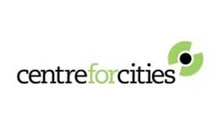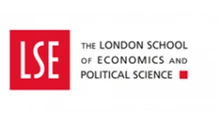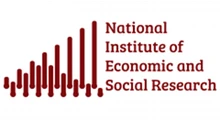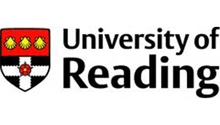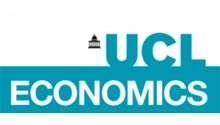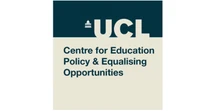Despite an abundance of valuable raw materials and breathtaking natural beauty, the western US state of Wyoming lags its neighbours in terms of economic performance. This is largely due to a lack of substantial urban centres, driven in part by excessively restrictive regulations on housing.
Wyoming is a landlocked rural state in the mountain west sub-region of the United States. It has several historical advantages, and a number of its neighbouring states – Colorado, Idaho, Montana, Nebraska, South Dakota and Utah – are booming. But Wyoming’s tradable income remains overwhelmingly dependent on fossil fuel extraction, and without economic diversification, its main source of livelihood could come under serious threat as the world seeks to reduce its carbon emissions.
Figure 1: Real GDP by US State, highlighting Wyoming (WY)
Source: Bureau of Economic Analysis
The European settlement of Wyoming was kick-started in 1867 when a Union Pacific railway station and a US army fort were established in the state capital, Cheyenne. A land-grant university was also set up in nearby Laramie in 1886 – an investment that research suggests has enhanced local economic performance (Kantor and Whalley, 2014).
A century later, the Clean Air Act (1970) made Wyoming’s coal deposits far more economically viable due to their low pollutant content, sparking an enormous mining boom that reached its zenith just before the global financial crisis of 2007-09. As a result, today the state has investible funds saved that are worth more than 50% of its GDP.
Wyoming also maintains a business-friendly policy environment. It has one of the lowest regulatory and tax burdens in the United States – exemplified by its outright lack of a personal income tax – of which many out-of-state companies take advantage by incorporating (registering a business to become a separate legal entity) in Wyoming.
The quality of education is also very high. In 2021, for example, Wyoming invested the most of any state in education (including primary, secondary and post-secondary) in per capita terms.
Despite these fortuitous circumstances and wise investments, Wyoming’s population has stagnated. As one of the least populated states in the whole country, today there are under 600,000 people living in Wyoming. In comparison, there are over two million people living over the border in Idaho, and neighbouring Colorado has a population of just under six million.
For more than 125 years, Wyoming’s neighbouring states have been home to more people, and while the state’s population has grown very slowly since the end of the Second World War, several of its neighbours – including Colorado, Idaho and Utah – have ballooned in size over the same period.
One salient comparison is between Cheyenne and nearby Fort Collins in Colorado. These towns both had approximately 40,000 people in 1970, but today Cheyenne has a population of just 65,000 while Fort Collins has grown more than four times to 170,000.
What does Wyoming’s economy look like?
The economic composition of Wyoming reflects its low and thinly dispersed population base. Its GDP per capita is above average in industries directly related to natural endowments of the land, such as tourism, agriculture, transport and warehousing, and resource extraction. But the state lags far behind on sectors that are intensive in human capital (high-skilled jobs), including information technology, finance, professional services and manufacturing.
This gets at the heart of Wyoming’s growth challenge. It underperforms in a variety of modern, cutting-edge sectors precisely because of its lack of concentrated population, In other words, it misses out on what economists call agglomeration effects – the positive benefits that firms and workers experience when they cluster together in a specific geographical area.
Sub-national US employment data reveal that the share of employment in each of these industries rises dramatically with the population of a city. Without such an urban area, Wyoming cannot realistically hope to diversify its economy and, as a result, to grow.
To understand why, consider all the people who must work together in a specialised industry such as manufacturing of biomedical devices. A given firm needs a variety of trained engineers, medical professionals and people to fulfil regular business functions such as accounting and marketing. This poses a coordination problem that cities help to solve. In a large metropolitan area, a biomedical engineer could plausibly find people in these various other specialised professions and start a company. Indeed, they may already be working in related fields in that same city. But in smaller towns, the budding entrepreneur is unlikely to find all the requisite talent needed to develop their new venture.
The skills gap that constrains Wyoming from participating in advanced services and manufacturing is well understood locally, and it is a key reason why the state invests so much in education. In principle, this is a reasonable strategy: the state could gradually build up its skilled workforce through education, in the hope of eventually solving the coordination problems that make even modestly larger cities so much more competitive.
But this possibility is hobbled by the extraordinarily high rates at which young people leave the state. By their late thirties, nearly two-thirds of people born in Wyoming have left for another state – the highest rate of outmigration rate in the entire country.
It is not that Wyomingites grow up and decide to leave the mountain west region behind entirely. Data on the migration destinations and birthplaces of young American adults show that the top locations of ex-Wyomingites are overwhelmingly in bordering states. These people are chiefly attracted to larger cities nearby, including Billings in Montana, Denver and Fort Collins in Colorado, and Salt Lake City in Utah.
How might state policy-makers address these problems?
To start building a high-skill agglomeration economy, Wyoming needs to reduce its exodus of young people significantly. Research shows that when people migrate, they balance access to good jobs and amenities against the cost of living in a location (Roback, 1982). Wyoming needs to improve on these factors if it is to retain its young people.
One relatively obvious strategy to change this migration equilibrium would be to make big investments that provide well-paying jobs. Given that the private sector is not choosing to make these investments in Wyoming, the state will need to intervene (that is, act outside of regular market dynamics). For example, National Laboratories in the United States often employ thousands of people to conduct cutting-edge research and development (R&D). Wyoming not only has no such National Laboratory to date, but its receipt of federal R&D spending per capita is low compared with most other states.
Alternatively, Wyoming could create a new major post-secondary educational institution such as a medical school (which it currently lacks). This kind of ‘anchor institution’ would be best placed in one of the largest towns in the state, to build on an existing population base.
A more surprising but extremely important strategy would be to fix Wyoming’s housing market. Currently, it is heavily over-regulated, which contributes not only to unaffordability but also a lack of urban amenities. Although Wyoming prides itself as being a low-regulation ‘cowboy’ state, in fact it has some of the most restrictive housing regulations in the United States. One study of land use and zoning lawsuits finds that Wyoming is in the top third of most over-regulated states in the country (Calder, 2017).
Another study uses natural language processing to gauge the restrictiveness of housing codes in more than 2,600 US towns (Mleczko and Desmond, 2023). Several major Wyoming towns – including Casper and Jackson – are in the 10-20% of the dataset with the greatest regulatory tightness.
These regulations mainly show up as restrictions that make it impossible or unprofitable to build dense housing (such as apartments or starter homes with limited outdoor space). Depending on the specific municipality, regulations include minimum lot sizes, maximum building heights, minimum setbacks, minimum parking space requirements and zoning that forbids multi-family housing.
All of these restrictions have been linked empirically to lower housing supply and higher prices in research (Molloy, 2020). This is because they prevent the private market from creating the housing supply that local people demand.
What other challenges follow from low housing supply?
Several key consequences follow. First, there is an outright scarcity of housing supply. Anecdotes abound in Wyoming’s local news of police chiefs and teachers who get a job in the state but cannot find anywhere to live locally.
More formally, Wyoming’s housing supply is unresponsive to demand. In some other parts of the United States, high price growth of housing is accompanied by a surge of new construction, which then offsets price pressures. Yet every single county in Wyoming has a measurably unresponsive housing supply. Fail to build it – and they will not come.
Second, because of the supply shortage, prices are unnecessarily high. In absolute terms, housing may still be more affordable than in neighbouring large cities such as Denver. But compared with other US counties with comparable population, income and remoteness, Wyoming counties have unusually elevated housing prices.
Third, the restrictiveness on apartments in Wyoming has created a lack of dense population in downtown areas. This results in a lower supply of urban amenities. The fact that few people live in Wyoming downtowns compared with other US towns of comparable size (as confirmed by satellite data) means that there is relatively little foot traffic for local businesses.
Research has linked dense localised populations to increased supply of urban amenities, such as cafes, bakeries and restaurants (Blanco and Neri, 2023). Indeed, several communities in Wyoming have fewer restaurants than their equivalents with similar population in neighbouring Colorado. This is especially problematic because surveyed students at the University of Wyoming cite places to eat as their most desired urban amenity.
What next?
Wyoming is hardly unique in facing a housing crisis. The phenomenon is general to the English-speaking world, because common law institutions empower homeowners to obstruct new housing developments in their local areas. But it is perhaps a more existential issue in Wyoming than in many places, as it constitutes a major policy lever with which the state can encourage its educated young people to stay rather than leave.
Fortunately for Wyomingites, there are leaders within the state who are tackling this problem head on. The state legislature, for one, has eased certification requirements for trades-people so they can work more easily on housing developments across Wyoming.
The city of Cheyenne has also reduced or removed several critical regulatory barriers to new housing, including minimum lot sizes, building heights, maximum density restrictions and luxury materials requirements. The city is now on track to grant permits for three times the number of housing units in 2025 than the annual average between 2013 and 2019.
Other lagging regions could learn from Wyoming's experience. Spending on education is often seen as a universally good strategy, but in Wyoming's case, the same investment would pay off more generously if there were a more free market approach to housing construction.
Wyoming's relatively unaffordable housing and lack of dense, vibrant downtowns prompts its young people to move to larger cities outside the state. In turn, the state cannot tap into their talent to enter new industries, hampering longer-run economic growth.
Where can I find out more?
- Pathways to prosperity in Wyoming: a research project conducted by the Harvard Growth Lab, exploring the constraints on growth in Wyoming.
- How Wyoming’s exodus of young adults holds back economic diversification: research paper published by the Harvard Growth Lab in 2024.
Who are experts on this question?
- Ricardo Hausmann
- Eric Protzer
- Tim O'Brien
- Tim Freeman




